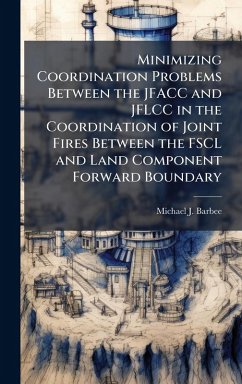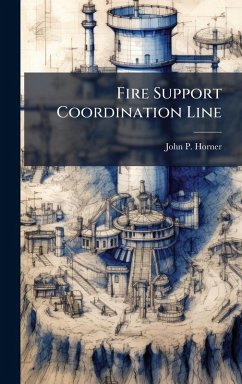
Fires and Effects Coordination Cell
Versandkostenfrei!
Versandfertig in über 4 Wochen
27,99 €
inkl. MwSt.
Weitere Ausgaben:

PAYBACK Punkte
14 °P sammeln!
This monograph explores the possible evolution of a command system, specifically the Fires and Effects Coordination Cell, within the Interim Brigade's staffs organization. The purpose of this examination is to determine if the Fires and Effects Coordination Cell in the Interim Brigade's staff organization will increase effectiveness for planning urban operations. First, the monograph begins by examining the new operational environment and the US Army's response. Then the monograph demonstrates the evolving nature of an asymmetrical threat in an urban environment. The goal is to understand the ...
This monograph explores the possible evolution of a command system, specifically the Fires and Effects Coordination Cell, within the Interim Brigade's staffs organization. The purpose of this examination is to determine if the Fires and Effects Coordination Cell in the Interim Brigade's staff organization will increase effectiveness for planning urban operations. First, the monograph begins by examining the new operational environment and the US Army's response. Then the monograph demonstrates the evolving nature of an asymmetrical threat in an urban environment. The goal is to understand the origin, definitions, goals, desired effects, and possible tactics of asymmetric warfare. The assessment indicates that the effective use of the components of information operations would enhance the effect of combined arms throughout the full spectrum of operations in an urban environment. Next, the monograph examines current and emerging MOUT doctrine and Draft FM 3-0. The goal is to determine if current doctrine is correct and current concerning today's environment and whether contemporary doctrine explains the application of combat power, including the components of information operations, to achieve the desired effects desired in an urban environment. This analysis showed an apparent void in current MOUT doctrine, but demonstrated that emerging doctrine addresses today's environment. With the apparent void in current doctrine, the monograph then analyzed ways in which a commander can use components of information operations to shape and isolate an urban environment with an asymmetrical threat. A modern case study is used to demonstrate lessons learned using the components of information operations in an urban environment against an asymmetrical threat. The case study is the Russian involvement in Chechnya, specifically Grozny, in 1993-1995. The monograph then investigates the Fires and Effects Coordination Cell concentrating primarily on the nonlethal aspects. This investi This work has been selected by scholars as being culturally important, and is part of the knowledge base of civilization as we know it. This work was reproduced from the original artifact, and remains as true to the original work as possible. Therefore, you will see the original copyright references, library stamps (as most of these works have been housed in our most important libraries around the world), and other notations in the work. This work is in the public domain in the United States of America, and possibly other nations. Within the United States, you may freely copy and distribute this work, as no entity (individual or corporate) has a copyright on the body of the work. As a reproduction of a historical artifact, this work may contain missing or blurred pages, poor pictures, errant marks, etc. Scholars believe, and we concur, that this work is important enough to be preserved, reproduced, and made generally available to the public. We appreciate your support of the preservation process, and thank you for being an important part of keeping this knowledge alive and relevant.












